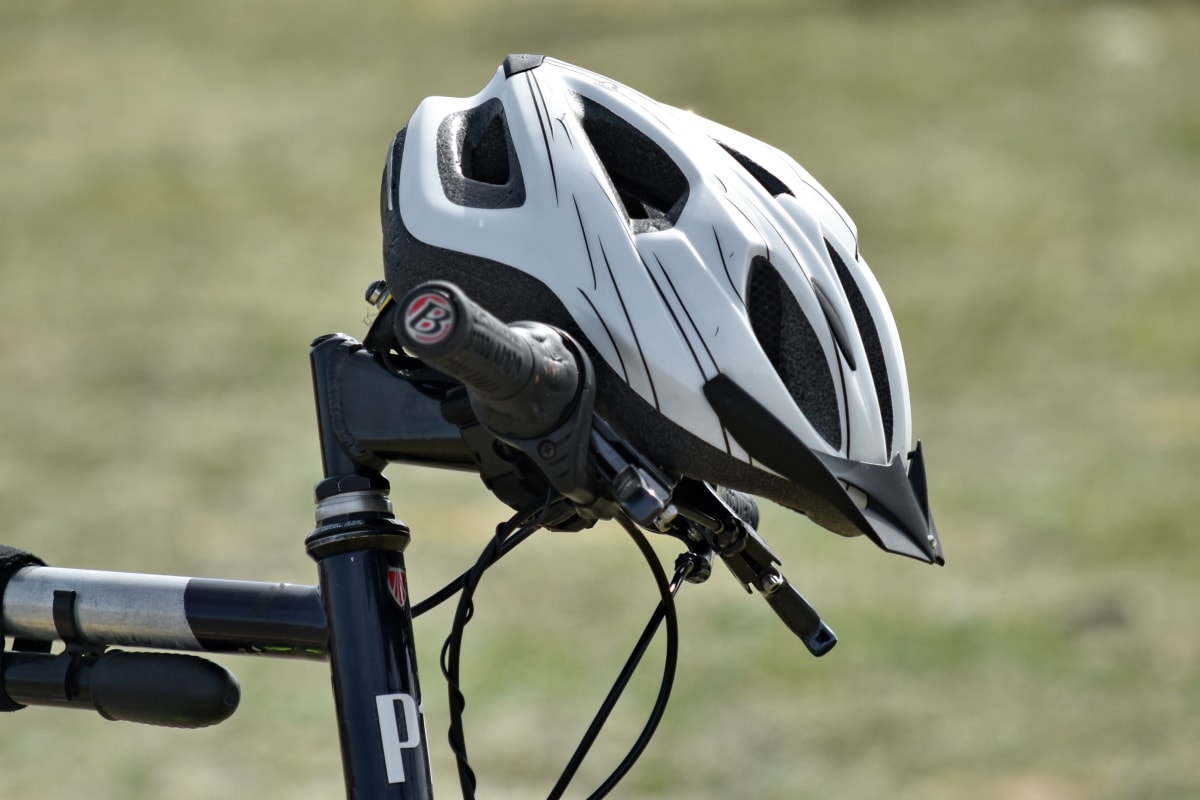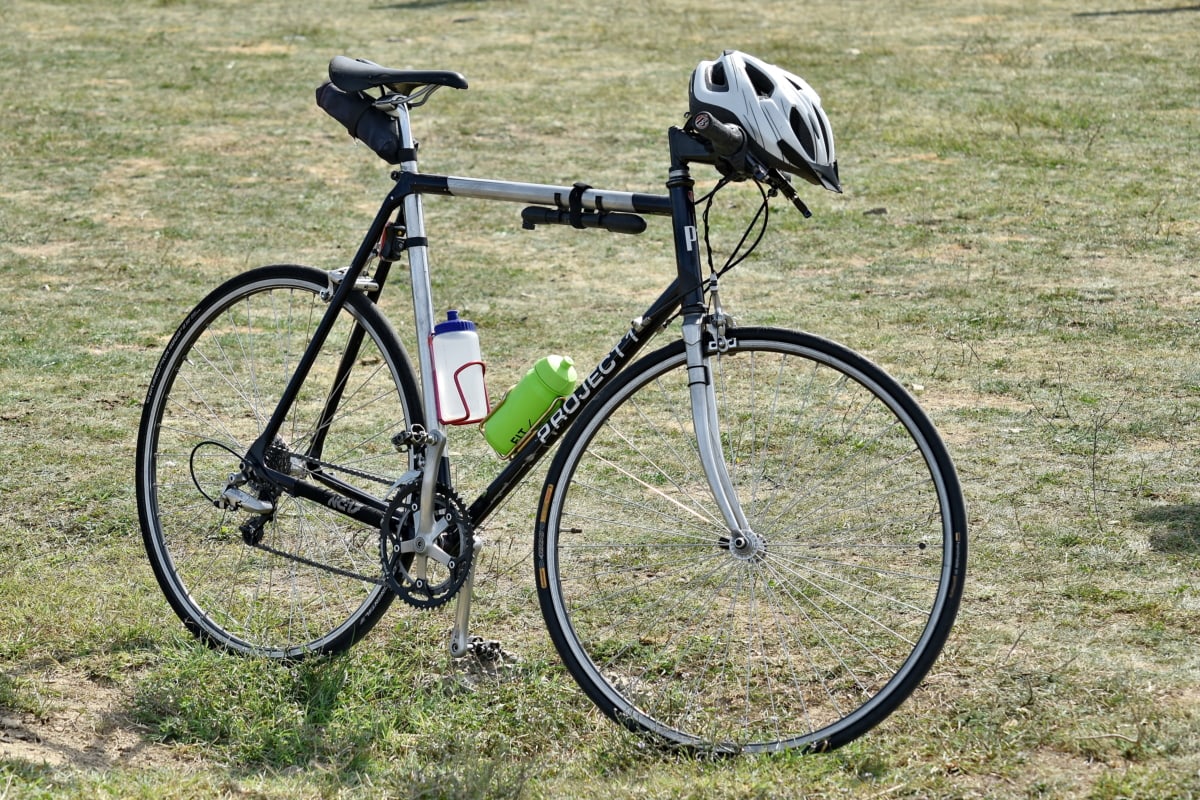
All road bike helmets being sold on the market intended to serve the same purpose, which is to protect a cyclist’s skull in a severe accident. The ability to absorb or negate the impact is determined by the certification procedure, which systematically examines whether the helmet complies with the safety standard. This process can be applied to both American and European standards. In a nutshell, all certified helmets provide the same protection capacity regardless of their price.
Then, why bother to buy a higher, more expensive helmet model if the cheap helmet can offer the same degree of protection as the expensive one does? Well, there is more than one factor that dictates the price of a helmet. Some of them are lightless, ergonomic, materials, the capacity of ventilation, the strap and fastener, and, finally, the comfort in general.
The structure of a bike helmet has evolved considerably during the past several years. Today’s bicycle helmets have already reached the degree of lightness that is considered impossible a few decades ago. Thanks to the stringent regulation set by Union Cycliste Internationale, UCI has mandated that professional cyclists must wear a protective helmet during the tournament. Thus, several manufacturers then devote a considerable amount of time to forging lightweight, aerodynamic, and practical for professionals worldwide.
Anyway, buying a decent road bike helmet is not an easy task since multiple brands are available on the market. Therefore, we have gathered various information about road bike helmets being sold on the market and summarized them up to 8 essential tips you should know before buying a road bike helmet.
>>>Looking for a decent road bike helmet? check out our review of road bike helmet
>>>Check out the complete FAQs’ answers for the road bike helmet
-
Determine the type of helmet you are going to buy
Generally, there are different types of helmets for several riding orientations. Those who prefer road cycling may consider purchasing a dedicated road bike helmet, which usually offers a better air ventilation system. Simultaneously, mountain bike riders are likely to focus on a mountain bike helmet, which is equipped with a visor to enhance visibility when the sunlight slips the tree and offers protection from lower tree branches.
If you are cycling to work regularly, you may consider buying a city helmet instead. This type of helmet is designed to have less air intake during the ride, and some models may feature the other cap, which protects from cold or rain. Additionally, many helmet models can be folded to reduce the overall space without sacrificing safety when wearing the helmet.
-
The helmet must comply with the safety standard
A helmet is, in fact, a protective device and therefore subject to the safety standard. Regardless of design and color, the helmet’s primary function is to protect a cyclist’s head in the event of severe impacts. According to the European safety standard, the certified helmet is required to pass the impact test that it must absorb and negate as much effect as possible along with the outer shell. Furthermore, the outer shell is allowed to be broken but not shattered to ensure the cyclist’s maximum safety. Besides, the helmet should be able to withstand the subsequent impact as well. Anyway, make sure that the helmet complies with the European standard EN1078 for Europe and the United States’ CPSC.
Recently, there is a more substantial increase in safety standard technologies such as rotational coating or MIPS (Multiple-Directional-Impact-Protection-System), which can redirect rotational force during the impact of the WaveCel materials. These technologies can offer better protection to cyclists from severe brain injuries by negating rotational force elsewhere. However, they are likely to drive up the price as well.
-
A bicycle helmet is composed of the outer and inner shell
To provide maximum comfort and safety, the helmet usually consists of the outer shell and the inner one. Typically, the inner body is made of polyurethane material with ample density to effectively absorb the impact during severe accidents. On the other hand, the outer shell is crafted using in-molded technology to provide a durable structure to withstand the subsequent implications. Thus, the outer shell is usually made of elastic materials. Additionally, the outer shell can be made of PVC or polycarbonate materials. A PVC helmet is cheaper than polycarbonate, but the polycarbonate helmet lasts longer than the PVC counterpart.
Most helmet models are equipped with internal mesh embedded in the protective foam, which is lightweight but offers a great deal of protection. Moreover, some elaborate helmets come with a double internal shell system to direct the incredible impact elsewhere.
-
Pay attention to the size
Typically, manufacturers often launch road cycling helmets in 2 or 3 different sizes, Small, Medium, and Large. Although most brands claim that their helmet can universally “fit” cyclists of all ages, it is advisable to determine your head’s size beforehand. To do so, we usually measure the skull’s perimeter at the height that corresponds to the upper part of the forehead. Then the value must fall within the range supported by the helmet size you choose. Our suggestion is to avoid buying a helmet that your headband size matches the range’s upper limit. For instance, if your head circumference is 22.8 inches, then you shouldn’t buy a helmet with a size range of 21.2 – 22.8 inches.
By the way, pay more attention to strap adjustment to ensure that you will be comfortable enough to carry on your ride. Theoretically, the adjustable strap should fit snugly under your chin and remain firmly in its position even when the head is shaking. Though many helmet models are designed to be very adaptable and adjustable, it is highly recommended to test the helmet before proceeding with the purchase. For bicycle helmets, there are three main adjustment points:
- The chin straps
- The side straps
- The occipital support on the back of the head
-
The ventilation system
A good ventilation helmet might save you from severe heatstroke. Of course, you feel more comfortable riding without a helmet, but you may be risking your life by doing so. A good ventilated helmet will direct a fresh airflow to your head while channeling heat and stale air out via the rear exhaustion system. However, the number of vent channels on the shell does not correspond with the ventilation system’s capacity. The design of internal channels in the shell does direct the airflow through the helmet and over the head. Furthermore, this system proves to be a very effective way to dissipate heat.
-
The aerodynamic design
The aerodynamic factor is vital to energy-saving and comfort during a long-distance ride. Unfortunately, there is a trade-off: increasing aerodynamic efficiency usually means fewer ventilation channels, which often results in a low ventilation system. Furthermore, aerodynamic design usually drives up the helmet’s price, and there is no explicit evidence that aerodynamics can increase safety.
-
The weight of the helmet
As you might already be aware, bicycle helmets are designed with materials to absorb and resist shocks. Budget helmets are usually heavy and have a thick outer shell, which is made of either PVC or polycarbonate as a reinforcement. On the contrary, the high-end models use rigid foam with different densities to cut the weight down in some vital areas of the shell. However, the high-density foam material is still sufficient to absorb and distribute the impacts and the shell, which substantially reduces the head injuries in some accidents. Generally, the inner shell of high-end models is reinforced with Kevlar, Nylon, or Carbon. These materials maintain the impact protection effectiveness but allow you to lose weight while still offering superb ventilation, which is very important for your head. The price of materials inversely correlates with the weight. The lighter the weight is, the higher the price will be.
-
Helmet maintenance
Comfort should be the most crucial factor when you consider buying a helmet because you have to wear it for an extended period. To prolong the helmet’s life, the essential point of contact, such as the skull, forehead, and the back of the head, should be carefully taken care of. Commonly, budget helmets feature a standard head profile while the top models provide a more refined and ergonomic design. Moreover, most high-end models do feature antibacterial foam inside the inner shell. Please also note that using petroleum-based solvents is strictly prohibited because they can damage the helmet and significantly reduce its protective capacity.
-
When should you replace a road bike helmet?
Please keep in mind that helmets can get expired even without a severe impact or accident. Typically, the time frame that you should replace a new helmet depends on the helmet’s quality.
- For budget helmets with PVC shells, it is advisable to replace a new helmet every two years.
- For more expensive polycarbonate helmets, which are resistant to UV light, five years is recommended.
- If the crack on the surface is noticeable, replace a new helmet immediately.
In case of a severe impact, the outer casing may appear intact, hiding the damaged Styrofoam underneath. Therefore, consider replacing a new helmet even though you have found no crack or deformity on the shell. Road bike helmets are designed to protect your head for a single impact only.
The Bottom Line
The best bike helmet’s primary function is to protect a cyclist against head injuries, which can also lead to severe consequences. However, with the evolution of new technology, other factors also come into play: comfort, aerodynamics, and ventilation.
Most helmets are made of expanded polystyrene, covered with a polymer outer shell. In the event of a significant impact, polystyrene is designed to absorb energy and compress. Don’t forget to always replace your helmet after an accident or crash and regularly check the helmet condition before wearing it.
With a sturdy structure and compliance with the law, a good road bike helmet costs less than 40 dollars. However, if you choose to spend more, you can buy a highly protective model that is lighter and more breathable at the same time. The excellent investment is around 60 dollars and up. Always keep in mind that you can take advantage of many exciting offers on the online marketplaces.






